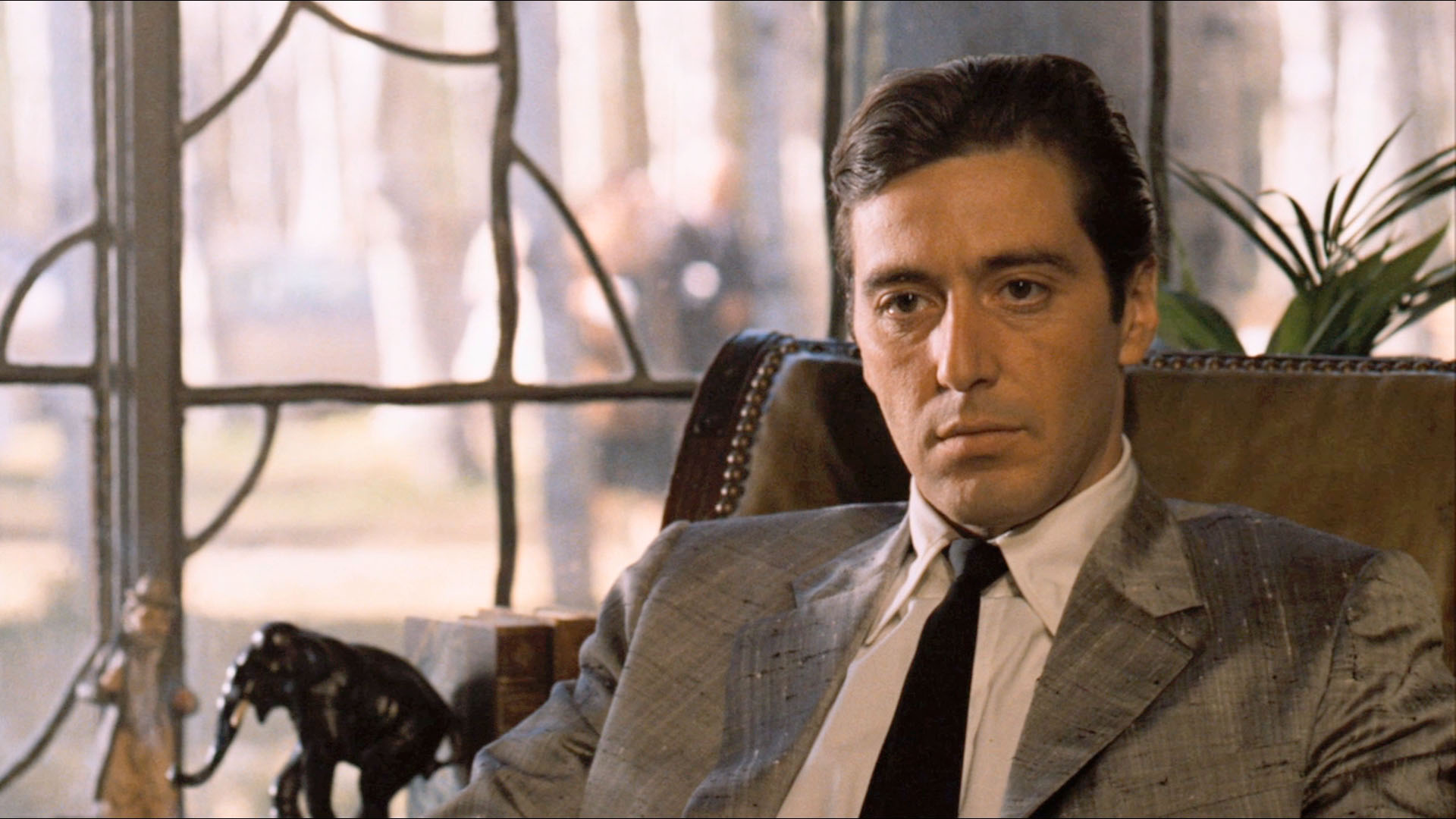
I think Roger Ebert is the best movie reviewer that we have ever had. There have been some other great ones but to me Roger stands out above the rest. I grew up watching Sneak Previews and would seek out the movies that Roger and his partner, Gene Siskel touted. Once Roger’s reviews became available online, I would always read them. Roger was passionate about movies and he was a great writer. I loved reading his reviews.
But, like all human beings, Roger had to make mistakes sometimes. It’s not easy to watch a movie and then have to immediately decide if it is bad, mediocre or good. It is much easier to be able to reflect upon it, read what others have said and then decide whether you thought a movie was good or not. I know I have changed my mind on many, many movies after reading about them, seeing them again or discussing them with others.
In an interview with Dave Davies of NPR Roger said “You have to realize you’re not writing for the filmmakers. You’re writing for the potential film audience. And I would much rather hurt somebody’s feelings who made the picture than send somebody to see a movie and spend two hours of their life seeing a movie that I don’t think is worth seeing.”
And if we take what Roger said as a guide then we would have to say that he saw his role as guiding people towards watching movies that they would enjoy. This is obviously a really hard task given that everyone brings different things to the table. But Roger seemed to have the ability to recommend movies that most of his target audience, the movie going public, would seem to enjoy.
To attempt to objectively rate a film is very difficult, and also opens someone up for attack. But I do think there is some room for objectivity in discussing film. Vertigo, Citizen Kane and The Rules of the Game are all great movies. Some will disagree, but in general I think we can find agreement on these. I think the Sight & Sound, AFI and Metacritics lists are pretty good objective attempts at classifying movies as good or great.
In measuring whether Roger’s reviews met his goal of guiding people towards movies “worth seeing” I will use the critics rating on Rotten Tomatoes and the user ratings on IMDb. I think the two of these together give us a pretty good view as to whether a film has been both a critical and a commercial success.
I know that I am opening myself up for criticism by critiquing some of Roger’s reviews. Roger was a great writer who won a Pulitzer prize and our greatest movie critic. But when Roger read a blog I had written reviewing what I thought were some of his worst reviews, he generously wrote on Twitter “He lists my 75 worst reviews and says why they’re bad.
Some of the time, he’s right. But Unforgiven and Godfather 2 eventually made my Great Movies Collection, showing I’m capable of learning. I actually take this as a complement. It took a lot of work.”
Only a great man, very confident in his craft, could write something like that.
1. Unforgiven (1992)
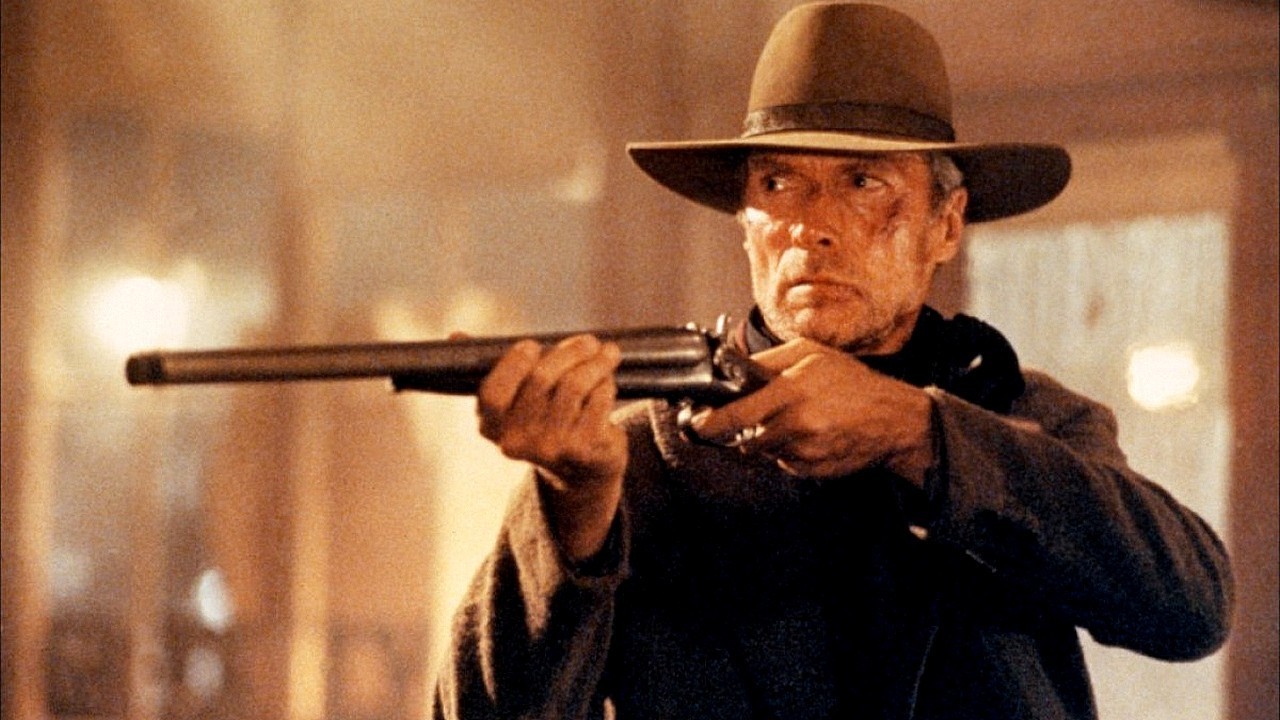
Roger was distracted when he originally reviewed this movie. His wife Chaz said in an interview with Entertainment Weekly said:
“The only thing he really actually changed from a thumbs down to a thumbs up review, and I think it went from a two star to a four star was the Clint Eastwood movie Unforgiven. That’s because it was just before our wedding and we were going through all this. He was sitting in the screening room and it’s the first time he was ever that distracted. He was going through all the stuff we had to do for our wedding in his head the day he watched that movie. He didn’t like it. Then when he saw what other people were [saying], he was like, “Oh my God, did I miss the ball on that?” He went back and watched it again after we got married, I think, and said, “I love this movie” and changed his review to a four star movie.” Roger later said in a 1996 interview he said “I changed my mind on Unforgiven; I gave it only two-and-a-half stars. I wasn’t thinking very well when I reviewed that.”
In his since deleted review Roger wrote: “It’s story, however, does not build up much momentum or have a strong sweep that carries us from beginning to end. It’s a kind of meandering picture that creates a world that gives us sharply etched moments in it surrounded by a somewhat shapeless atmosphere. On the whole I did enjoy it, but I thought it had a few too many characters and it was less organized then it might have been.” Roger gave it a very tentative thumb up.
Roger later added the movie to his list of Great Movies. In his Great Movie review Roger wrote: “Eastwood chose this period for “Unforgiven,” I suspect, because it mirrored his own stage in life. He began as a young gunslinger on TV and in the early Sergio Leone films “A Fistful of Dollars” and “For a Few Dollars More,” and he matured in “Coogan’s Bluff” and “Two Mules for Sister Sara,” under the guidance of Don Siegel, the director he often cited as his mentor. Now Eastwood was in his 60s, and had long been a director himself. Leone had died in 1989 and Siegel in 1991; he dedicated “Unforgiven” to them. If the Western was not dead, it was dying; audiences preferred science fiction and special effects. It was time for an elegy.”
The film won four Academy Awards: Best Picture and Best Director for Clint Eastwood, Best Supporting Actor for Gene Hackman, and Best Film Editing.
Unforgiven has a 96% Rotten Tomatoes score with Critics and an 8.2 score on IMDB.
2. Godfather : Part II (1974)
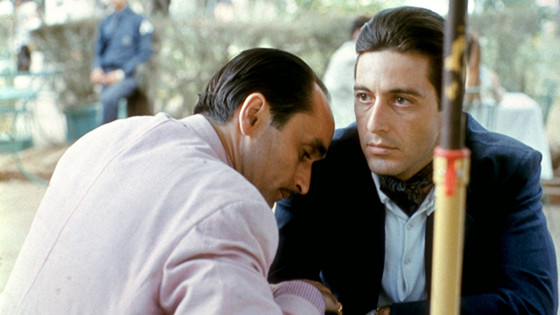
Roger left his original three star review posted online. In it he says:
“The Godfather, Part II moves both forward and backward in time from the events in The Godfather, in an attempt to resolve our feelings about the Corleones. In doing so, it provides for itself a structural weakness from which the film never recovers, but it does something even more disappointing: It reveals a certain simplicity in Coppola’s notions of motivation and characterization that wasn’t there in the elegant masterpiece of his earlier film.”
“The flashbacks give Coppola the greatest difficulty in maintaining his pace and narrative force. The story of Michael, told chronologically and without the other material, would have had really substantial impact, but Coppola prevents our complete involvement by breaking the tension. The flashbacks to New York in the early 1900s have a different, a nostalgic tone, and the audience has to keep shifting gears.”
“There’s also some evidence in the film that Coppola never completely mastered the chaotic mass of material in his screenplay. Some scenes seem oddly pointless (why do we get almost no sense of Michael’s actual dealings in Cuba, but lots of expensive footage about the night of Castro’s takeover?), and others seem not completely explained (I am still not quite sure who really did order that attempted garroting in the Brooklyn saloon).”
“What we’re left with, then, are a lot of good scenes and good performances set in the midst of a mass of undisciplined material and handicapped by plot construction that prevents the story from ever really building.”
“But Coppola is unable to draw all this together and make it work on the level of simple, absorbing narrative. The stunning text of “The Godfather” is replaced in “Part II” with prologues, epilogues, footnotes, and good intentions.”
In his Great Movie review of the Godfather Part II, in which he gives it four stars, Roger wrote:
“Of all of the reviews I have ever written, my three-star review of ‘Part II’ has stirred the most disagreement. Sometimes it is simply cited as proof of my worthlessness. I’ve been told by many that ‘Part II’ is a rare sequel that is better than the original. Have I changed my mind? No. I have read my review of ‘Part II’ and would not change a word.”
“Then why is it a ‘great movie’? Because it must be seen as a piece with the unqualified greatness of The Godfather. The two can hardly be considered apart (Part III” is another matter). “
Roger seems to be saying that Part II is a great movie, but only when it is coupled with the original movie. Obviously, I think this is a mistake. Many critics and fans think the second movie is actually superior to the first.
To me, this is clearly one of Roger’s worst reviews. He made a mistake after his first viewing calling parts of it chaotic, pointless and with structural weaknesses. He kind of makes up for his poor review by adding it to his Great Movie canon, but then he wrote that he wouldn’t change a word of his original review. Not one of Roger’s finer moments.
The Godfather : Part Two has a 97% score with the critics on Rotten Tomatoes and a 9.0 score on IMDB.
3. Gigli (2003)
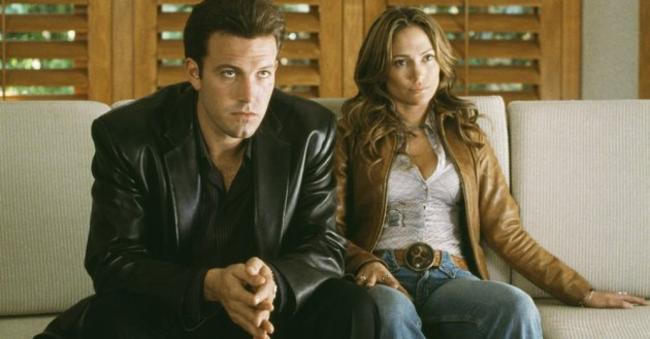
Roger liked Jennifer Lopez. I think his ratings on her movies reflect this.
Anaconda (1997) – IMDb 4.7 – Roger 3 ½ Stars
The Cell (2000) – IMDb 6.3 – Roger 4 Stars
Maid in Manhattan (2002) – IMDb 5.2 – Roger 3 Stars
Gigli (2003) – IMDb 2.4 – Roger 2 ½ Stars
Shall We Dance (2004) – IMDb 6.1 – Roger 3 Stars
Angel Eyes (2001) – IMDb 5.6 – Roger 3 Stars
I could easily have added a couple of the above to the list of Roger’s Worst Reviews. But Gigli is kind of special. It won the Razzie for Worst Movie, Worst Actor, Worst Actress, Worst Screen Couple, Worst Director and Worst Screenplay. Gigli is usually included in any listing of worst movies of all time.
In his review Roger wrote:” The movie tries to do something different, thoughtful, and a little daring with their relationship, and although it doesn’t quite work, maybe the movie is worth seeing for some scenes that are really very good.” He then went on to write: “Consider the matching monologues. They’ve gotten into an argument over the necessity of the penis, which she, as a lesbian, feels is an inferior device for delivering sexual pleasure. He delivers an extended lecture on the use, necessity and perfect design of the appendage. It is a rather amazing speech, the sort of thing some moviegoers are probably going to want to memorize. Then she responds. She is backlit, dressed in skintight workout clothes, doing yoga, and she continues to stretch and extend and bend and pose as she responds with her speech in praise of the vagina. When she is finished, Reader, the vagina has won, hands down. It is so rare to find dialogue of such originality and wit, so well written, that even though we know the exchange basically involves actors showing off, they do it so well, we let them.”
For me, it was easily, one of the worst scenes I have ever seen. Painfully bad.
Roger finished by writing:” Affleck and Lopez create lovely characters, even if they’re not the ones they’re allegedly playing, and the supporting performances and a lot of the dialogue is wonderful. It’s just that there’s too much time between the good scenes. Too much repetitive dialogue. Too many soulful looks. Behavior we can’t believe. I wonder what would happen if you sweated 15 minutes out of this movie. Maybe it would work. The materials are there.”
I can’t explain this review, except that Roger seemed to really enjoy seeing Jennifer Lopez on the screen. The movie seemed to want to have a comedic relationship between Larry and Brian, like the one Raymond and Charlie had in Rain Man, but it didn’t work here. It just wasn’t funny at any time. The romance didn’t work either. Both failures can be seen in the following sparkling dialogue.
Ricki: It’s turkey time.
Larry Gigli: Huh?
Ricki: Gobble, gobble.
If you thought that dialogue was funny or romantic, then you may appreciate the movie like Roger did.
Gigli has a 6% score with the critics on Rotten Tomatoes and a 2.4 score on IMDb.
4. Raising Arizona (1987)
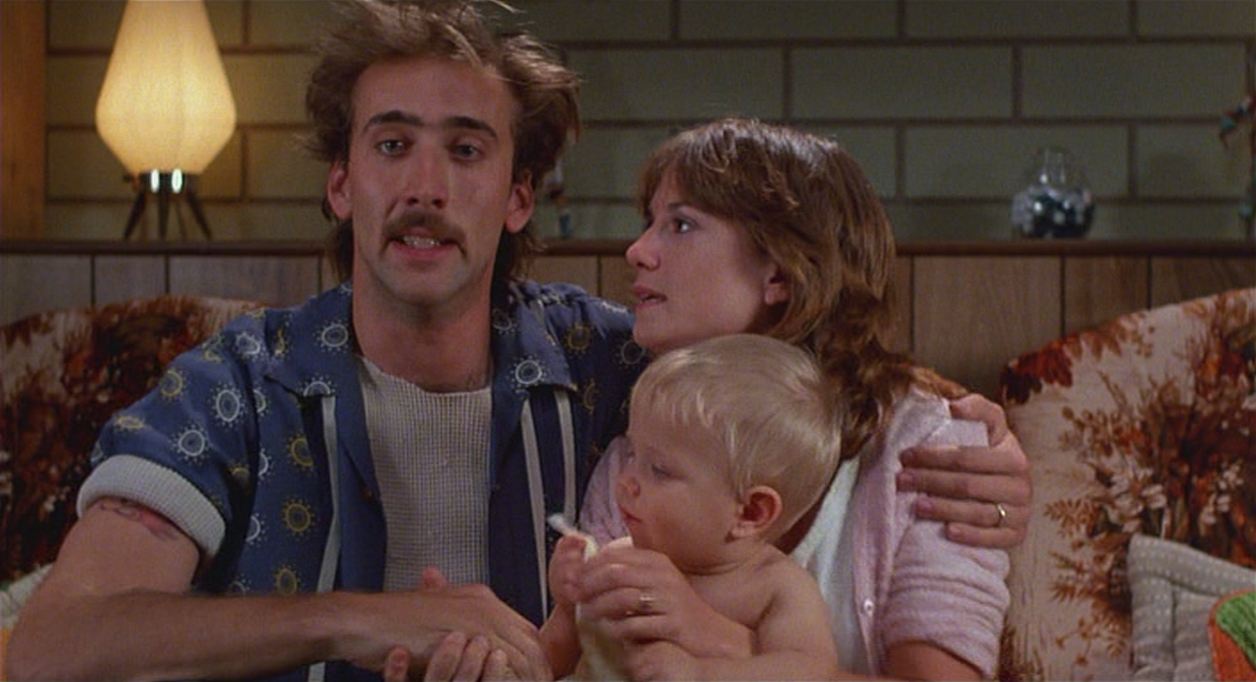
In his At the Movies review Roger said “I didn’t think it worked for me and I’m the guy that loved Blood Simple. In this film it seemed to me, that first of all the dialogue was too large. People are always talking about ‘If you look through yon window.’ They were trying to be funny, thank you, but I didn’t think they were funny to tell you the truth. And I also felt that the characters were so weirdly drawn, that instead of being funny they were just behavioral exhibits so that the film never developed a rhythm that was funny for me that carried me along with it.”
In his one-and-a-half-star online review, Roger said that “The movie cannot decide if it exists in the real world of trailer parks and 7-Elevens and Pampers, or in a fantasy world of characters from another dimension. It cannot decide if it is about real people, or comic exaggerations. It moves so uneasily from one level of reality to another that finally we’re just baffled.” He went on to say: “If the same story had been told straight, as a comic slice of life, it might have really worked. I kept thinking of Jonathan Demme’s Melvin and Howard, the film about the gas station owner and the billionaire, in which equally unlikely events happened, but were very funny because they were allowed to be believable.”
So, in general, Roger felt the movie was too over the top, and strayed to far from realism. I understand what Roger was saying but to me the film was a homage to the screwball comedies of Howard Hawks and Preston Sturges. One of the things that makes them screwball comedies is that they do stray from realism into the farcical realm. I don’t think screwball comedies are easy to do successfully, but I think this movie did it very well.
The film ranks 31st on the American Film Institute’s 100 Years…100 Laughs list, and 45th on Bravo’s 100 Funniest Movies”list.
Raising Arizona has a 91% score on Rotten Tomatoes with the critics and a 7.4 score on IMDB.
5. Butch Cassidy and the Sundance Kid (1969)
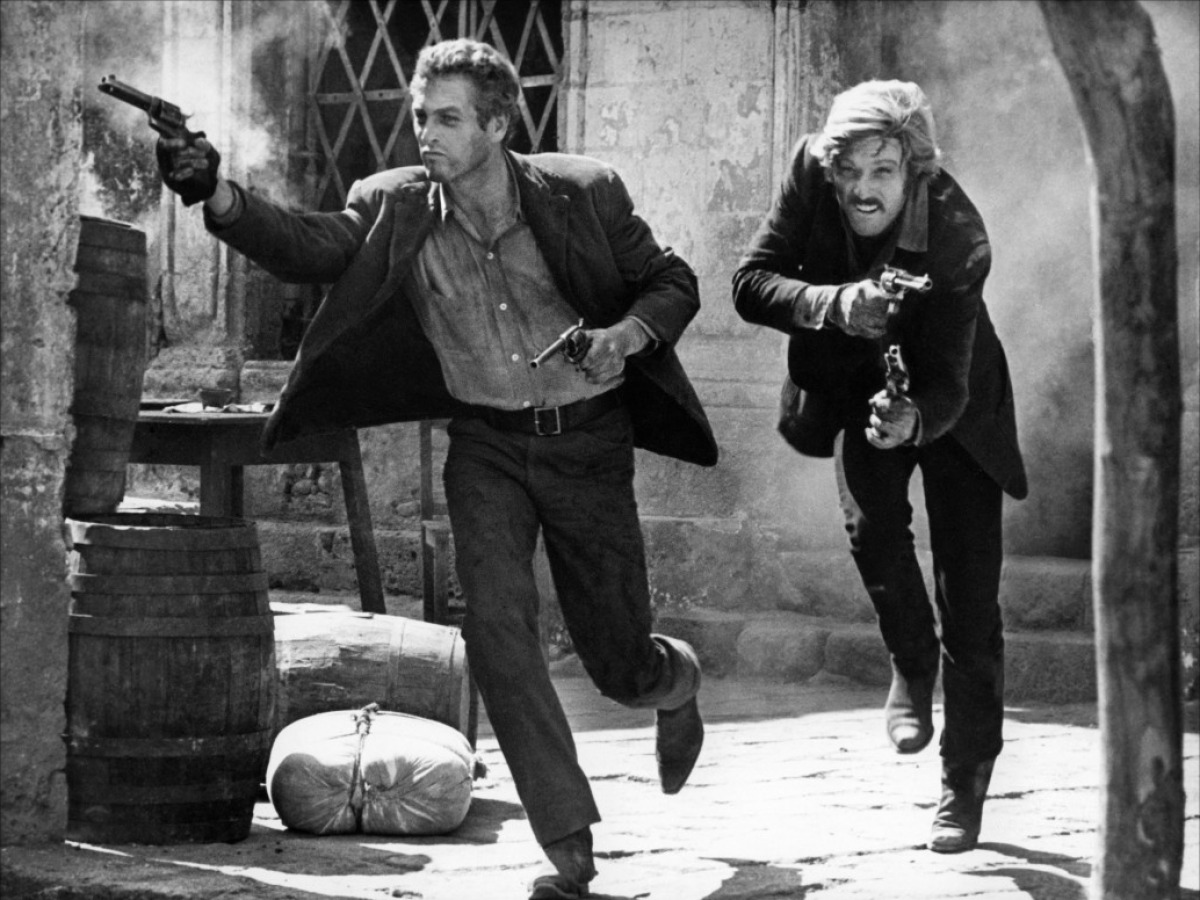
Roger was not a big fan of this very successful film. In his two and a half star Chicago Sun-Times review he wrote: “Butch Cassidy and the Sundance Kid must have looked like a natural on paper, but, alas, the completed film is slow and disappointing. This despite the fact that it contains several good laughs and three sound performances. The problems are two. First, the investment in superstar Paul Newman apparently inspired a bloated production that destroys the pacing. Second, William Goldman’s script is constantly too cute and never gets up the nerve, by God, to admit it’s a Western.” Roger went on to write: ”But unfortunately, this good movie is buried beneath millions of dollars that were spent on “production values” that wreck the show. This is often the fate of movies with actors in the million-dollar class, like Newman. Having invested all that cash in the superstar, the studio gets nervous and decides to spend lots of money to protect its investment.”
I think what Roger missed was that the movie was more interested in exploring the relationship between its two dynamic stars than it was in being a traditional Western. The “buddy” film relationship was just explored inside of a Western wrapper.
I think Roger eventually came around on this film. In his 1979 review of Butch and Sundance: The Early Years, Roger wrote:” The film even has some of the same easygoing charm of Butch Cassidy and the Sundance Kid (1969), and if Berenger and Katt are not as electrifying as Newman and Redford – well, few acting teams are.”
This film was selected to the National Film Registry, listed in AFI’s Top 100 Movies, and in AFI’s Top Heroes and Villains, ranked in the top fifty box office draws of all time and ranked number eleven by the Writers Guild of America on its list of Greatest Screenplays ever written.
Butch Cassidy has a 90% score with critics on Rotten Tomatoes and an 8.1 score on IMDB.